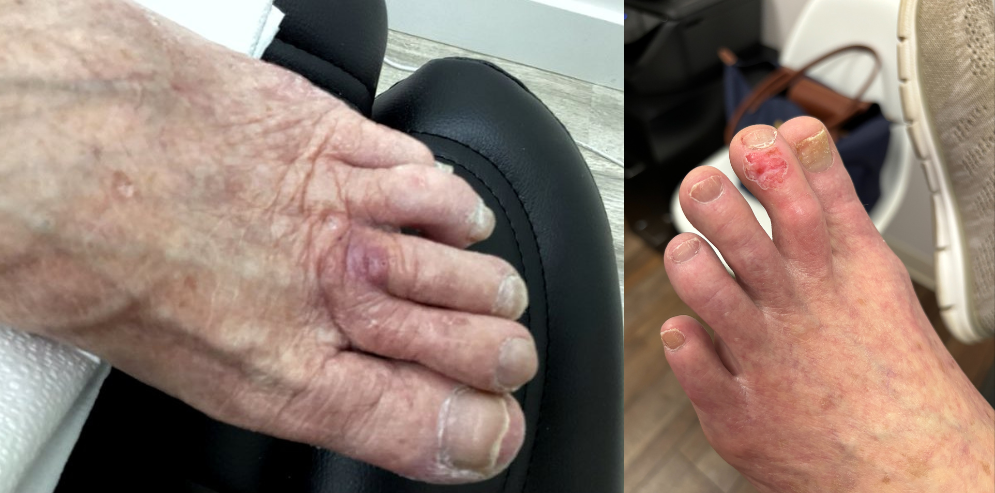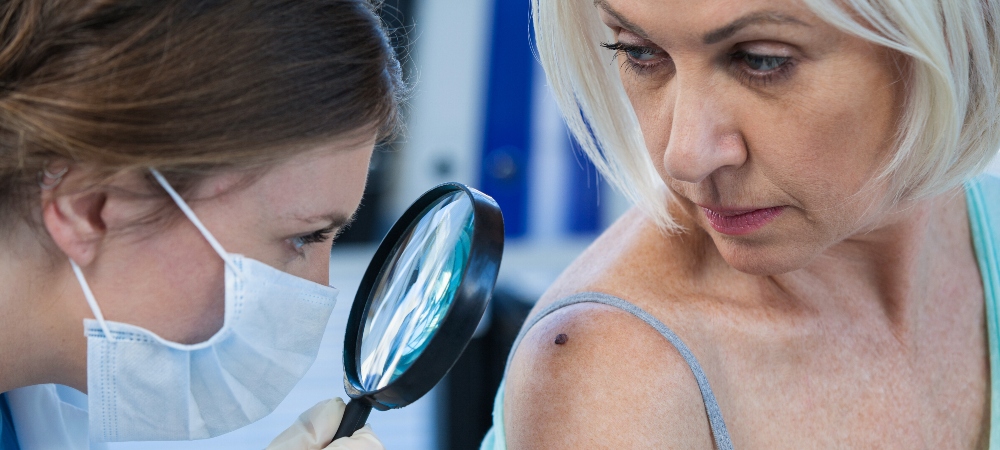
Infiltrative basal cell skin cancer is a variant of basal cell skin cancer, one of the most common skin cancers. This specific type presents differently than other basal cell skin cancers, in that it forms in thin, small clusters, making it more difficult to spot. How dangerous is infiltrative basal cell skin cancer? Learn more with GentleCure before exploring treatment options with your specialist.
Infiltrative Basal Cell Skin Cancer Prognosis
Many people who have skin cancer will be diagnosed with basal cell skin cancer, which can present in a wide variety of colors, shapes, and sizes. Many basal cell skin cancers are red or pink sores that refuse to heal, and can also be itchy or uncomfortable. Unlike many other forms of basal cell skin cancer, infiltrative basal cell skin cancer is typically white and harder to see because it develops in between the skin’s collagen fibers. The more common forms of basal cell skin cancer typically form on the top-most layer of the skin.
How Dangerous is Infiltrative Basal Cell Skin Cancer?
Like many common skin cancers, infiltrative basal cell skin cancer is highly treatable when found early. However, because this condition has an unusual appearance, it may be harder to detect in a timely manner. Unlike other skin cancers that may alert you to their presence by bleeding or pussing, this skin cancer area is much more subtle, and could go undetected by the untrained eye.
This is one reason why healthcare providers recommend annual skin cancer screenings, where an experienced dermatologist can examine your skin. This important checkup will help keep you and your doctor aware of any changes in your skin, no matter how subtle, so you can stay ahead of any unhealthy developments and discuss your treatment options in a timely manner.
When the cancer is caught early, people who have skin cancer see a 98.4% 5-year survival rate, making it one of the most treatable forms of cancer.
Infiltrative Basal Cell Skin Cancer Treatment
Due to the visually challenging element of this kind of skin cancer, the most commonly recommended infiltrative basal cell skin cancer treatment method is Mohs surgery. This surgical procedure aims to remove unhealthy cells from the skin by cutting them out with a scalpel, allowing the healthy tissue to heal around the area.
Mohs surgery is not always your only option. If you’re interested in pursuing a highly-effective surgery-free treatment for your skin cancer, ask your doctor if GentleCure™ | Image-Guided SRT is right for you. Image-Guided SRT is more than 99% effective at curing basal and squamous cell skin cancers, and it does so without bleeding, surgical scarring, or reconstructive surgery. Side effects are mild to moderate, and you can continue to go about your daily life without interruptions.
Learn More About GentleCure to Treat Basal Cell Skin Cancer
If you’re interested in learning more about infiltrative basal cell skin cancer treatments, talk to your physician about GentleCure | Image-Guided SRT. This safe, effective, surgery-free cure for common skin cancers may be available to you depending on your diagnosis. See how it works and follow up with our skin cancer information specialist team at 855-936-4411 with any additional questions.








